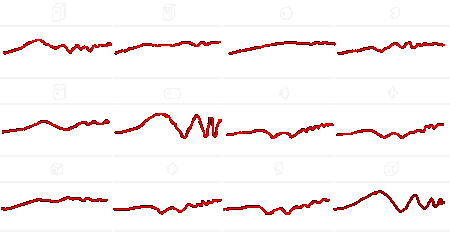| Diffraction loss is transition between a
half-space acoustic load and freespace. The 6 dB
loss is correct for a speaker enclosure in free
space. When the enclosure is placed in a real
life room it will not exhibit 6dB loss, it will
be aroud 3 or 4 dB, since room is not free space
and will encounter additional effects(reverb,
standing waves, boundary effect, cavity effect .
. .). 
Diffraction loss and room
effects are independent and completely different
effects. The diffraction loss is nicely
predictable whereas the effects of the room are
highly variable, not only from room to room but
also with speaker placement and room
furnishing. This typically means that each
listening environment will be unique and will
require unique compensation.
Spherical diffraction
compensation is easily corrected with a high
degree of precision, while other enclosures are a
little bit less predictable and demand large
amount of equalisation.
Regardless of where it is placed in the room,
a typical hi-fi speaker system sees a half space
load at frequencies from the midrange up as a
result of the drivers placement on the
At high frequencies the speaker is radiating into
"half space" i.e. it is only radiating
into the forward hemisphere. Starting in the
midrange (depending on the baffle size) the
system shifts from radiation into half space to
radiation in full space at lower frequencies.
This transition from half space loading to full
space loading results in what is commonly called
the "6 dB baffle step",
At even lower frequencies, say from 100 Hz down,
the wavelength of the radiated sound is such that
the walls and cavity of the listening room begin
to load the system in a way that results in a
complex load that is less than half space and
results in increased output from the system.
This effect in the low bass is called variously
"room gain", "boundary
effects", "room resonance",
"frequency dependent radiation
impedance", etc.
The smaller the baffle the higher the
transition frequency.
The shape of the diffraction loss frequency
response curve depends on the size and shape of
the enclosure. All enclosure shapes exhibit a
basic 6 dB transition (or "step") in
the response with the bass ending up 6 dB below
the treble. A spherical enclosure exhibits this
transition clearly with a very smooth diffraction
loss curve. More "angular" enclosures
exhibit the underlying 6 dB step along with a
series of response ripples that are dependent on
the placement of the speaker with respect to the
baffle edges. The worst case appears to be
placing the driver at the center of a circular
baffle so that it is the same distance from all
diffracting edges. Placing the driver on the
baffle so that it is a different distance from
each edge tends to minimize the response ripples
and make the diffraction loss look more like the
smooth loss of the sphere. Because the
spherical diffraction loss is a common element
for the diffraction of all enclosure shapes and
the response ripples are much more difficult to
predict (and can be minimized anyway) it makes
sense to approximate the diffraction loss of a
loudspeaker as the diffraction loss of the
equivalent sphere.
|


